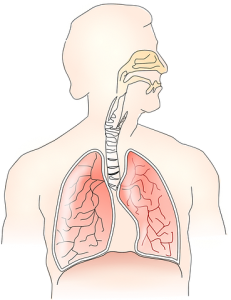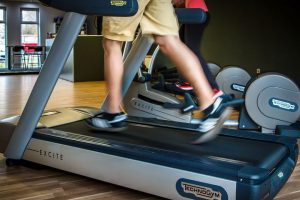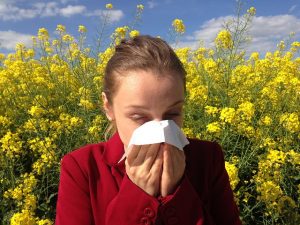Everyone associates allergies with springtime, but they can hit any time of year. Fall is actually a high-allergy season, with the air drying out, mold growth increasing in in damp fallen leaves and compost piles, and the dreaded ragweed continually releasing pollen over the course of 2 to 3 months. Web MD says that one in five Americans suffer from allergies and/or asthma and that over half of the U.S. population is sensitive to at least one allergen, and often more than one.
Allergies are as miserable as colds. With your eyes uncontrollably pouring fluid and your nose constantly stuffed up not to mention the sneezing, it’s tough to get in the mood for a workout, but that is exactly the thing that could get you feeling better.
First, the Disclaimer

Allergy and asthma sufferers should check with their doctors to get recommendations on proceeding with exercise. Image by Vic/Flickr
We’d like to think that exercise is a one-size-fits-all solution for everything that ails everyone, but there are always the exceptions to the rule. A very small percentage of people with allergies or asthma might have a negative reaction during exercise. That is why it’s a good idea to talk to your doctor about your workout plans before beginning. Also, exercise and some medications don’t mix well. Both issues are very good reasons to get your doctor’s input and a green light before exercising to fight allergies.
Study-Backed Prescription
In most circumstances, doctors will actually encourage patients to work out to combat symptoms of allergies and asthma. That is because studies such as the one published in the Journal of Allergy and Clinical Immunology have shown marked improvement for patients who exercise. Researchers have found that increasing exercise can play a big part in decreasing symptoms and severity, prompting them to recommend an “exercise prescription” as part of treatment.
How Exercise Helps

Getting your circulation going during a workout will ease your allergy symptoms, including alleviating congestion so you can breathe better.
Getting your blood flowing is as close to a cure-all as you’ll get for allergy symptoms. Increasing circulation draws blood to the parts of your body that are working hard and away from parts that aren’t a priority. In the case of allergies, that means redirecting blood from the vessels in your nose and causing them to constrict, resulting in clearing your airways. Plus, Fitness and Wellness News says that if your blood isn’t flowing well, allergens can accumulate in your body, but increased blood flow moves allergens out of your system.
Another benefit of exercise is that it strengthens the immune system and curbs stress-related hormones in your body. Everyday Health says that sets you up to withstand allergies better than others with weaker immune systems.
Things to Consider

Jump on the treadmill or other cardio equipment for your warm-up and cool-down during allergy season to get your blood flowing and open up your airways.
If you prefer an outdoor workout to hitting the gym, you may have to change your routine or at least become more vigilant during the fall pollen season. Web MD advises checking the weather and pollen levels each day. Pollen counts tend to be higher when the day is warm and the breeze is light, but windy days can wreak havoc with allergies, too. If the outlook seems questionable, move your workout indoors. Also, pollen levels tend to peak midday, so work out in the morning or the evening if you can.
Sometimes, even when you add exercise to your allergy-control plan, you still might need pharmaceutical help. You should always take medications as prescribed. However, in the case of 24-hour medicines that are taken only once a day, try taking them at night. That will allow you to sleep off the drowsy feeling antihistamines can cause so you won’t feel groggy all day, especially when it comes time to work out. Also, it’s extremely helpful for people with allergies or asthma to warm up and cool down aerobically. It gets the blood flowing before you start the actual exercising part of your workout so you can breathe through your nose as much as possible. And, it keeps things flowing while you ease your heart rate down afterwards.

